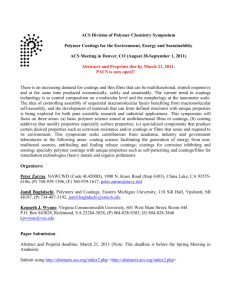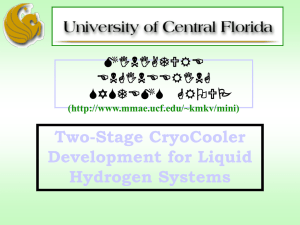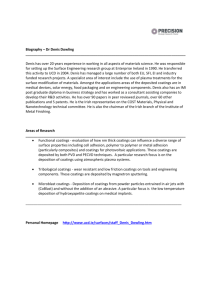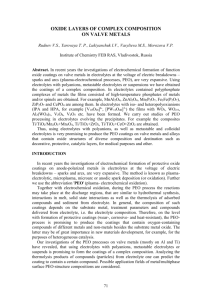Microtribology and Scaling Effect for Solid Lubricant Coatings
advertisement
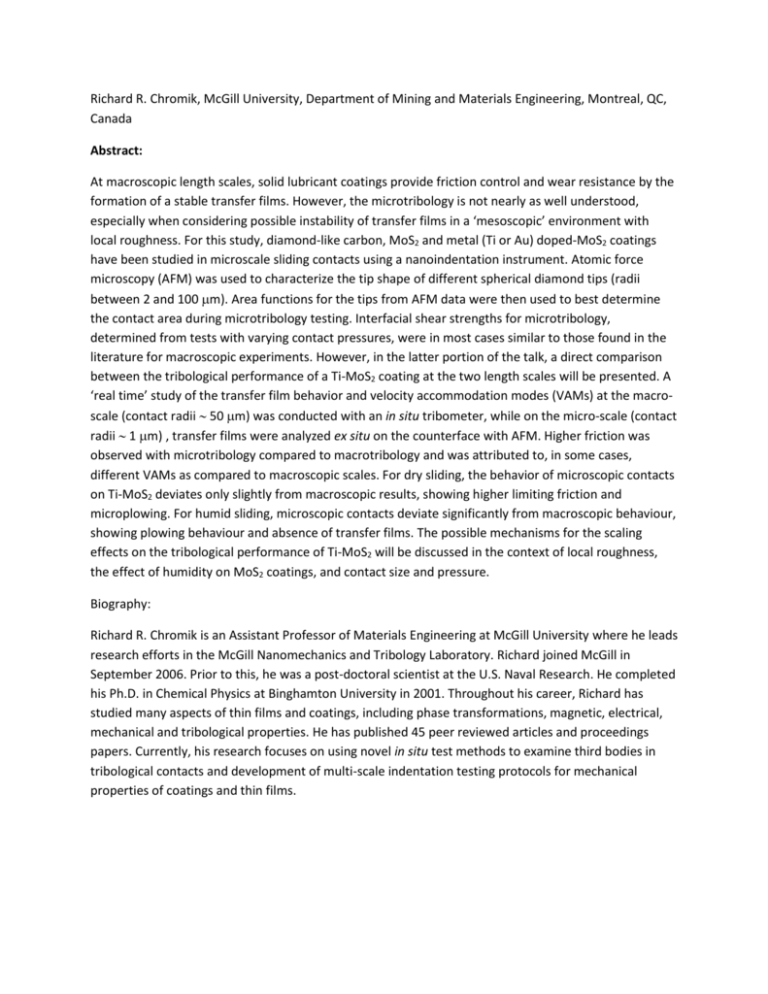
Richard R. Chromik, McGill University, Department of Mining and Materials Engineering, Montreal, QC, Canada Abstract: At macroscopic length scales, solid lubricant coatings provide friction control and wear resistance by the formation of a stable transfer films. However, the microtribology is not nearly as well understood, especially when considering possible instability of transfer films in a ‘mesoscopic’ environment with local roughness. For this study, diamond-like carbon, MoS2 and metal (Ti or Au) doped-MoS2 coatings have been studied in microscale sliding contacts using a nanoindentation instrument. Atomic force microscopy (AFM) was used to characterize the tip shape of different spherical diamond tips (radii between 2 and 100 m). Area functions for the tips from AFM data were then used to best determine the contact area during microtribology testing. Interfacial shear strengths for microtribology, determined from tests with varying contact pressures, were in most cases similar to those found in the literature for macroscopic experiments. However, in the latter portion of the talk, a direct comparison between the tribological performance of a Ti-MoS2 coating at the two length scales will be presented. A ‘real time’ study of the transfer film behavior and velocity accommodation modes (VAMs) at the macroscale (contact radii 50 m) was conducted with an in situ tribometer, while on the micro-scale (contact radii 1 m) , transfer films were analyzed ex situ on the counterface with AFM. Higher friction was observed with microtribology compared to macrotribology and was attributed to, in some cases, different VAMs as compared to macroscopic scales. For dry sliding, the behavior of microscopic contacts on Ti-MoS2 deviates only slightly from macroscopic results, showing higher limiting friction and microplowing. For humid sliding, microscopic contacts deviate significantly from macroscopic behaviour, showing plowing behaviour and absence of transfer films. The possible mechanisms for the scaling effects on the tribological performance of Ti-MoS2 will be discussed in the context of local roughness, the effect of humidity on MoS2 coatings, and contact size and pressure. Biography: Richard R. Chromik is an Assistant Professor of Materials Engineering at McGill University where he leads research efforts in the McGill Nanomechanics and Tribology Laboratory. Richard joined McGill in September 2006. Prior to this, he was a post-doctoral scientist at the U.S. Naval Research. He completed his Ph.D. in Chemical Physics at Binghamton University in 2001. Throughout his career, Richard has studied many aspects of thin films and coatings, including phase transformations, magnetic, electrical, mechanical and tribological properties. He has published 45 peer reviewed articles and proceedings papers. Currently, his research focuses on using novel in situ test methods to examine third bodies in tribological contacts and development of multi-scale indentation testing protocols for mechanical properties of coatings and thin films.


